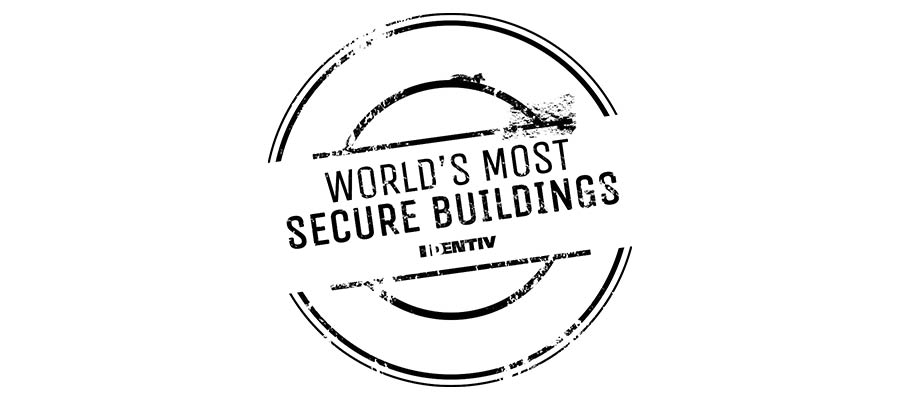The World's Most Secure Buildings: Federal Reserve Bank of New York
August 23, 2022
The Federal Reserve Bank of New York is one of the 12 Federal Reserve Banks in the United States. It serves the Second Federal Reserve District, which includes New York State, the 12 northern counties of New Jersey, Fairfield County in Connecticut, Puerto Rico, and the U.S. Virgin Islands.
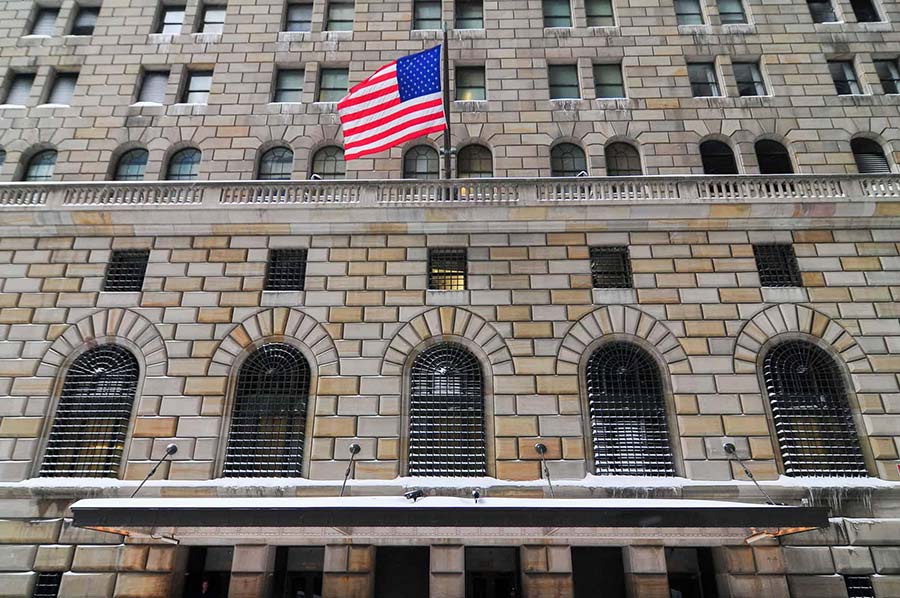
The Federal Reserve Bank of New York is located at 33 Liberty Street in Lower Manhattan. It is by far the largest (by assets), the most active (by volume), and the most influential of the Reserve Banks.
Given its essential role within the Federal Reserve System, the Federal Reserve Bank of New York and its president are considered first among equals within the system. Currently, its president is John C. Williams.
What makes the Federal Reserve Bank of New York one of the world’s most secure buildings? Read on to find out.
Functions of the Federal Reserve Bank of New York
The Federal Reserve Bank of New York acts as the:
- Market agent of the Federal Reserve System (as it houses the Open Market Trading Desk and manages the System Open Market Account)
- Sole fiscal agent of the U.S. Department of the Treasury
- Bearer of the Treasury’s General Account
- Custodian of the world’s largest gold storage reserve (about 5,620 metric tons)
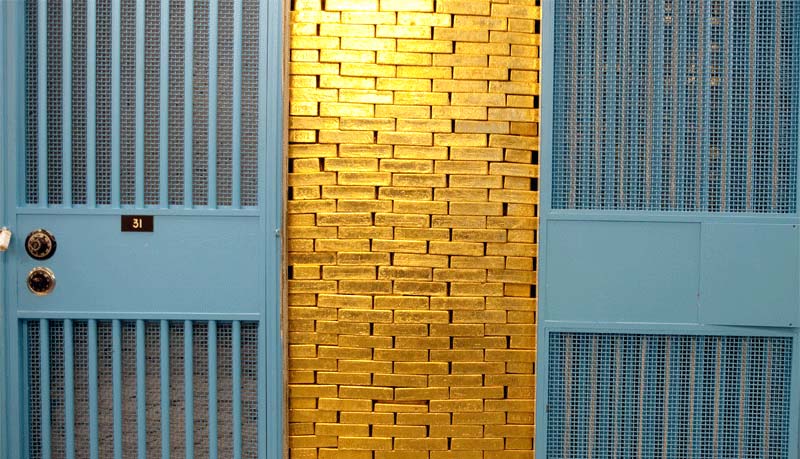
Apart from these distinct functions, the Federal Reserve Bank of New York also performs the same duties and tasks as the other Reserve Banks within the system.
Facts About the Federal Reserve Bank of New York
- Benjamin Strong, Jr. founded the Federal Reserve and the Bank of New York in 1914
- The Federal Reserve Bank of New York has security so tight it is entrusted with more U.S. gold bullion than the famous Fort Knox
- By 1927, its vault contained approximately 10% of the world’s official gold reserves (the largest current account holds $54 billion)
- Humans are not even allowed to enter the bank’s vault and pallets are moved by a team of robots
- A Jason Bourne-level protection force watches its perimeter with shooting range scores more impressive than marksmen
- The bank’s security systems are so trusted, even foreign governments use it for gold storage
- No individuals or private sector entities are permitted to store gold in the vault
- Much of the gold in the vault arrived during and after World War II, as many countries wanted to store their gold reserves in the safest possible location
- Each gold brick is worth roughly $640,000 in today’s currency
- Behind the gates of the gold vault, you can spot exactly where gold bricks were accidentally dropped by looking for cracks and indents in the floor
- No gold bar is exactly the same or 100% pure
- Account holders pay a handling fee for gold transactions, including when gold enters or leaves the vault, but otherwise, there is no fee for gold storage
- Every year, tens of thousands of visitors from around the world visit the gold vault as part of a free, public tour of the New York Fed
- If a bill is unfit to be recirculated, for example, is too old or unable to be accepted into a vending machine, it is cut into “confetti-like shreds”
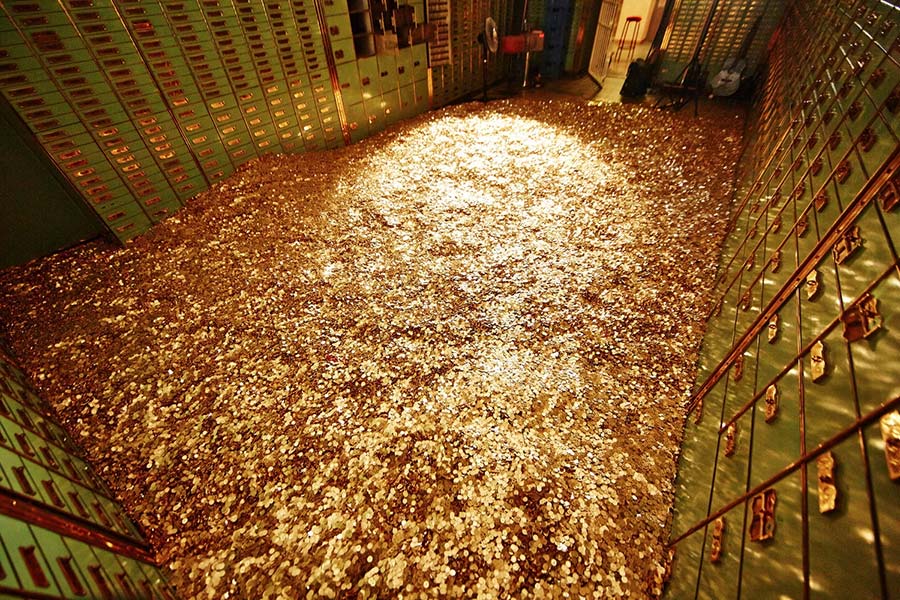
Construction of the Federal Reserve Bank of New York
The Federal Reserve Building has 14 above-ground stories and five basement levels. The stone exterior is reminiscent of early Italian Renaissance palaces. As the design was intended to accommodate up to 4,000 employees, the placement of elevators and entrances was the main consideration. The iron decorations, weighing a collective 180 long tons, depict animal heads and unusual motifs, including emoji-like smileys.
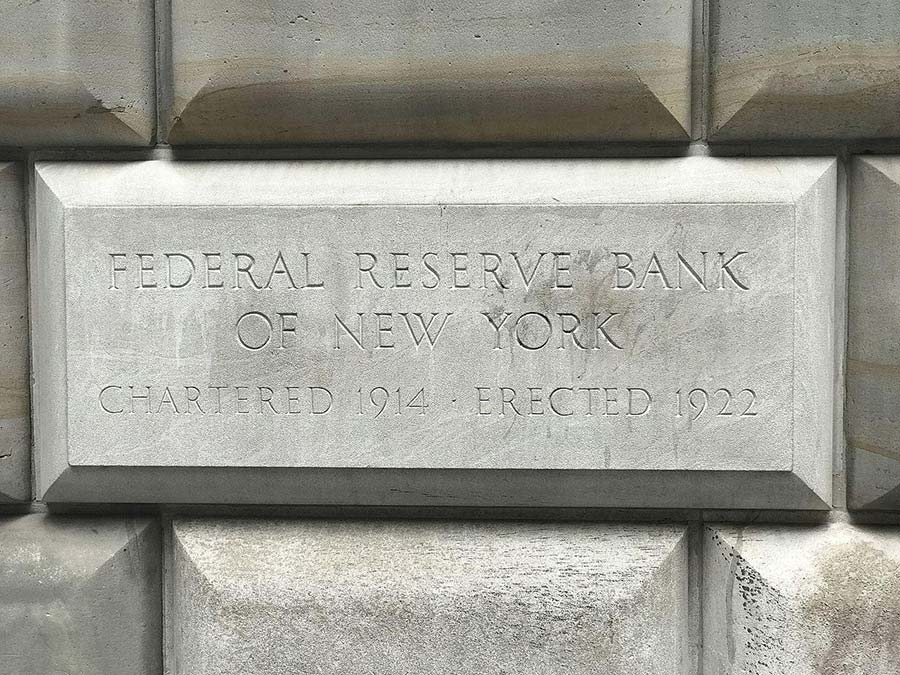
Façade
The façade is made of limestone and sandstone, serving as cladding for the steel interior superstructure. It is divided horizontally into three sections: a two-story base, a seven-story midsection, and a five-story top section. The stones of the façade are rusticated, with deep horizontal and vertical grooves separating each block.
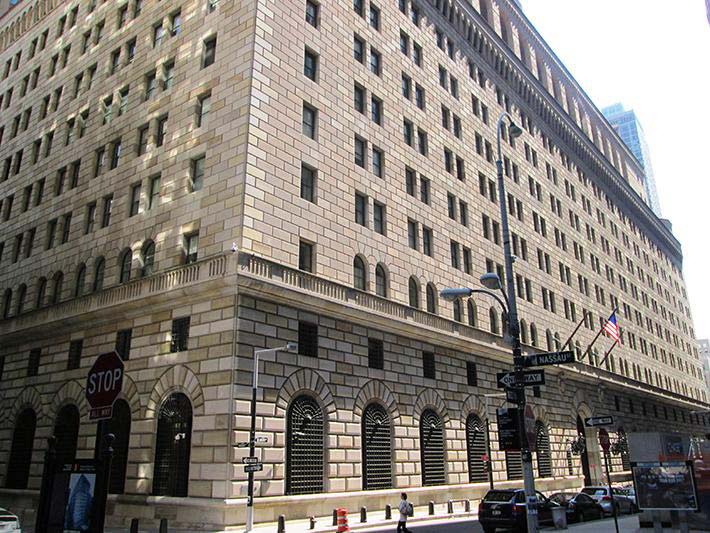
Interiors
Most of the remaining interior has standard office building construction. The structure is designed with just over 462,000 square feet of office space. The second floor has numerous corridors, connecting to the offices and a conference room. The 3rd through 12th floors contain loft-working spaces that could house several thousand employees.
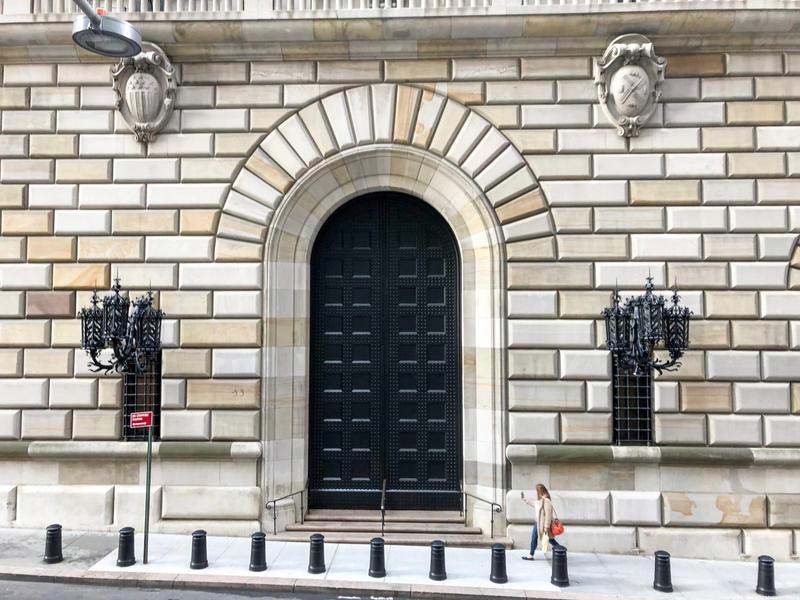
The 10th floor contains the officers’ quarters. The top floor features recreational facilities for employees. The 13th and 14th floors contain cafeterias, which were originally separate facilities for women, men, and bank officers. There is also an employee’s hospital and a gymnasium.
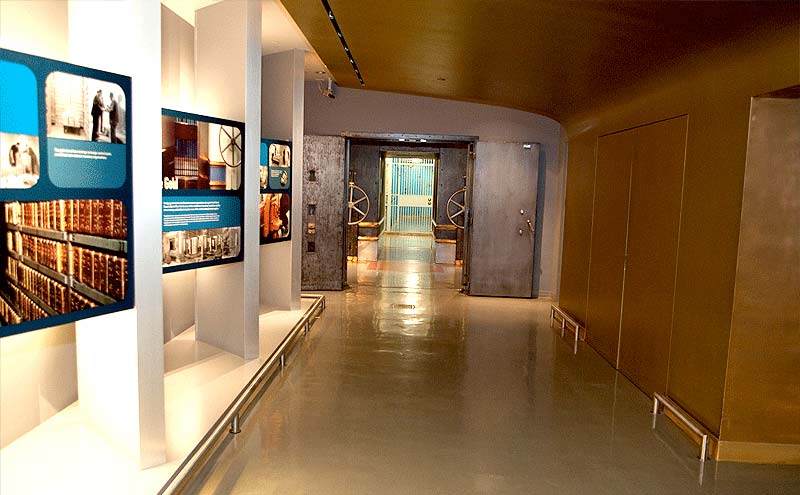
Gold Vault
The Federal Reserve Building’s three-story gold vault sits toward the western end of the site. It rests on Manhattan's bedrock, 80 feet (24 meters) below street level and 50 feet (15 meters) below sea level. It contains the largest known monetary-gold storage reserve in the world.
In 2019, the vault housed approximately 497,000 bars of gold, weighing about 5,620 metric tons. Nearly 98% of the building’s gold is owned by the central banks of 36 foreign nations. The remaining 2% is owned by the U.S. and international organizations such as the International Monetary Fund (IMF). The vault is 30 feet (9.1 meters) below and 100 feet (30 meters) away from the nearest New York City Subway tunnels.
The vault houses 122 compartments, and each compartment contains gold held by a single account holder (meaning gold is not commingled between account holders). Compartments are numbered rather than named to maintain the confidentiality of the account holders.
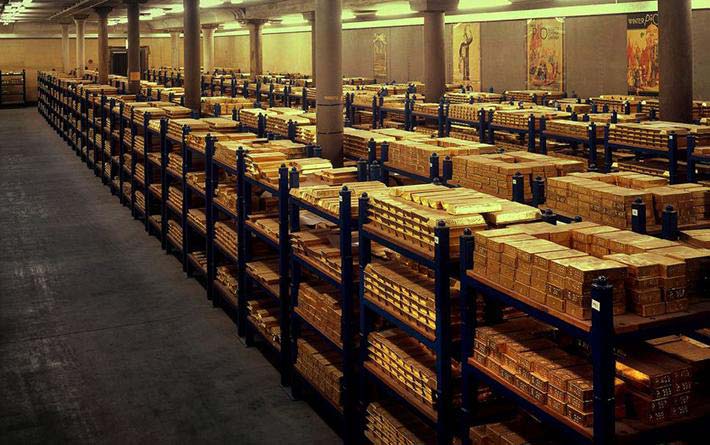
What Makes the Federal Reserve Bank of New York One of the World’s Most Secure Buildings?
The maximum-security gold vault in the Federal Reserve Bank of New York is located in the basement of the Manhattan building. The Fed is the custodian of the valuable reserves and has the responsibility of guarding it for account holders, such as the U.S. government and central banks. The gold is stored in compartments locked with a padlock, two combination locks, and an auditor’s seal.
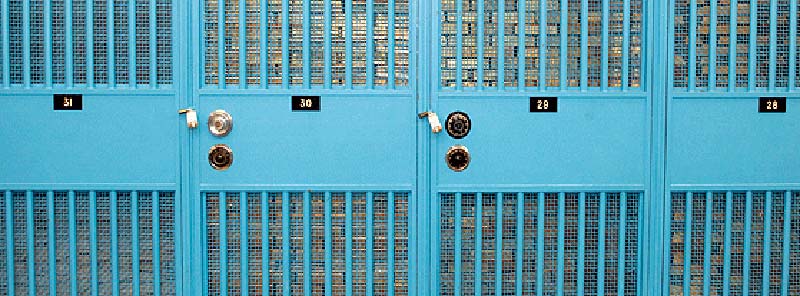
Using a 140-ton steel and concrete frame, the sole entry to the vault is safeguarded from water, air, and all outside infiltrators. In addition, 24-hour video and motion sensor monitoring protects the vault’s contents at all times.
Gold bars are transported by elevator from street level to the vault’s basement location. Once inside the vault, the bars become the responsibility of a control group consisting of three representatives: two members of the New York Fed gold vault staff and one member from the New York Fed internal audit staff. These three individuals have to be present whenever gold is relocated or a compartment is opened in the vault, even to change a light bulb. This helps ensure proper safekeeping and security for the gold.
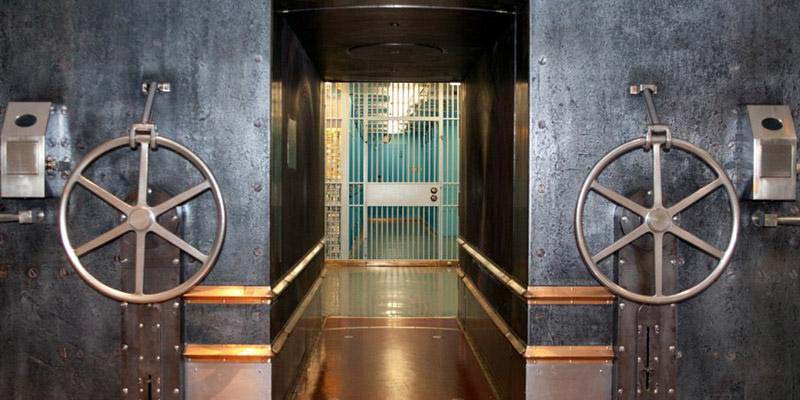
For maximum security, no one single person knows all time clocks and combinations to unlock the compartments, which means it requires three people to get into the stash at any time. All bars brought into the vault for deposit are carefully weighed, and the refiner and fineness (purity) markings on the bars are reviewed to ensure they agree with the depositor instructions and are recorded in the New York Fed’s records. This step is essential because the New York Fed returns the exact bars deposited by the account holder upon withdrawal.
The vault is safeguarded by a comprehensive multilayered security system, highlighted by a 90-ton steel cylinder protecting the only entry into the vault. The nine-foot-tall cylinder is set within a 140-ton steel-and-concrete frame that, when closed, creates an airtight, watertight seal. Once closed, four steel rods are inserted into holes in the cylinder and time clocks are engaged, locking the vault until the next business day.
Security is further enhanced by the massive steel-reinforced concrete walls surrounding the vault and all-day-long monitoring of activity inside and outside by security cameras, as well as the use of motion sensors when the vault is closed. Continuous supervision by the vault control group also ensures proper security procedures are followed at all times. The gold is protected by the New York Fed’s robust building security system and the armed Federal Reserve police force.
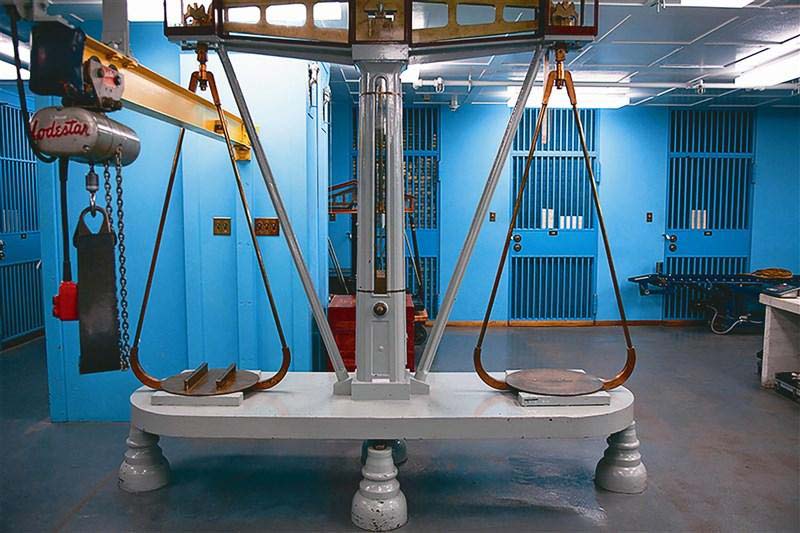
Secure Your Facility with Identiv
Identiv’s flexible physical access control system (PACS) and video intelligence solutions deliver the highest security at the lowest cost. Regardless of your physical location, effortlessly manage access control through our robust, feature-rich systems, hardware, and software.
To learn more about our PACS solutions, contact us at
+1 888.809.8888 or
sales@identiv.com.
